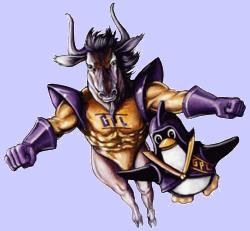
To Free or Not to Free the Code in Question
|
Part IV - OS abstraction to a fault: EULA 1980-1984 "So matters stood in 1980: three cultures, overlapping at the edges but organized around very different technologies. The ARPAnet/PDP-10 culture, wedded to LISP and MACRO and TOPS-10 and ITS. The Unix and C crowd with their PDP-11s and VAXen and pokey telephone connections. And an anarchic horde of early microcomputer enthusiasts bent on taking computer power to the people. Among these, the ITS culture could still claim pride of place." [ESR A Brief History of Hackerdom in "Open Sources: Voices from the Open Source Revolution" O'Reilly Jan1999]. In 1980, MS "license[d] UNIX operating system from Bell Laboratories and introduce[d] its XENIX adaptation." [HCS Chronology]. MicroSoft End User License Agreement (EULA) Following AT&T's expropriatory lead - cunning marketroid contrivance - MS now ceased selling software, opening content shallowness to the full. It too abstracted a right to use their software - on the collectively innovated technology, by license - retaining the property right unto themselves. Just as an early radio or television needed a license to legally be run - even though its OS was embedded in its component circuitry and dials, and sold with the product like an Apple II computer OS - MS asserted the ability to abstract the OS title as a separate item to the PC appliance OS itself. Separated, computers and OS's are useless. OS's and their license even moreso. Contrary to logic, money buys lawyers to defend this unethical cause of chicanery and greed. Competing software is sold as complete property, but MS edges its way past them. The world's greatest viral marketing campaign - by unpoliced 'piracy' - has begun. A popular wave of adoption will follow over the next two decades, and deliver 95% of the computer desktop market to Microsoft, having won hearts and minds - but especially pocketbooks - over to MS's 'borrowed' OS. No direct *nix response would be seen for a decade, to this seizure of market share via the microPC sector. The only successful countermeasure for free Unix will be to employ an even more powerfully abstracted software license, that is not for sale. MicroSoft's EULA is its "enduring legacy to the computing industry.. [and the] most significant contribution to the distribution of software around the world." [Tesla-PC NYC]. |
Proprietary M$-DOS vs IBM PC-DOS 81 AT&T Unix 82 / SunOS(BSD) 83 Arpanet switched to IP in 1983 "In 1984, AT&T divested itself of its local Bell telephone companies, and also created an independent subsidiary, AT&T Computer Systems. The creation of the subsidiary enabled the communications giant to enter the computer business. The new subsidiary marketed a number of computer products, including the UNIX operating system. Its software flagship was System 5, which ran on AT&T's 3B series of computers." [Business gets the word Lucent-Bell.] MIT 1984 GNU Project GNU/GPL General Public License LGPL GFDL etc license end-user freedom CopyLeft "But storm clouds were gathering over the Lab. The PDP-10 technology ITS depended on was aging, and the Lab itself was split into factions by the first attempts to commercialize AI technology. Some of the Lab's (and SAIL's and CMU's) best were lured away to high-paying jobs at startup companies." "The death blow came in 1983, when DEC cancelled its follow-on to the PDP-10 in order to concentrate on the PDP-11 and VAX lines. ITS no longer had a future. Because it wasn't portable, it was more effort than anyone could afford to move ITS to new hardware. The Berkeley variant of Unix running on a VAX became the hacking system par excellence, and anyone with an eye on the future could see that microcomputers were growing in power so rapidly that they were likely to sweep all before them." "It was around this time that Levy wrote Hackers. One of his prime informants was Richard M. Stallman (inventor of Emacs), a leading figure at the Lab and its most fanatical holdout against the commercialization of Lab technology." "Stallman (who is usually known by his initials and login name, RMS) went on to form the Free Software Foundation and dedicate himself to producing high-quality free software. Levy eulogized him as 'the last true hacker,' a description that happily proved incorrect." "Stallman's grandest scheme neatly epitomized the transition hackerdom underwent in the early 80s--in 1982 he began the construction of an entire clone of Unix, written in C and available for free. Thus, the spirit and tradition of ITS was preserved as an important part of the newer, Unix- and VAX-centered hacker culture." [ESR A Brief History of Hackerdom in "Open Sources: Voices from the Open Source Revolution" O'Reilly Jan1999]. [Draft 13Jul05 - to be cont'd..] |